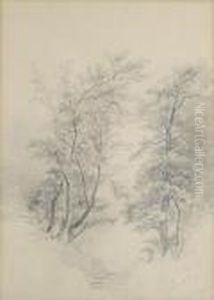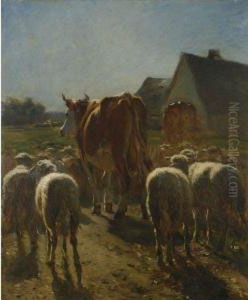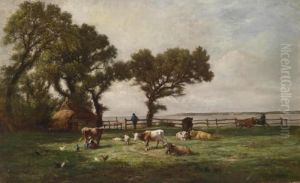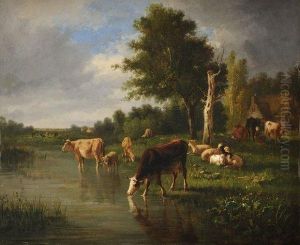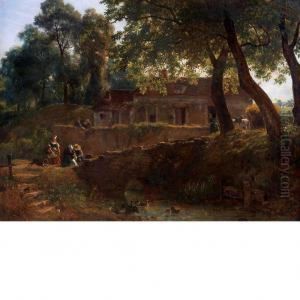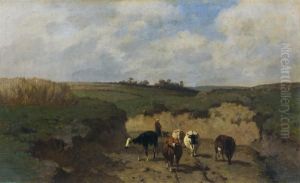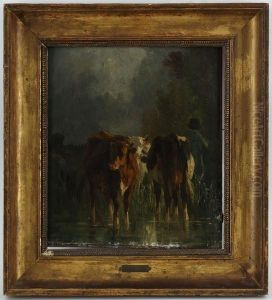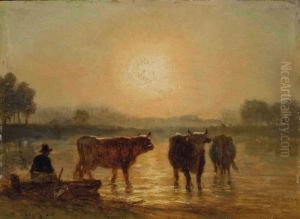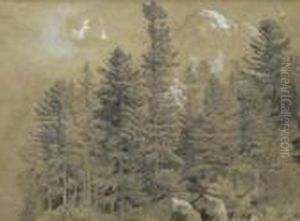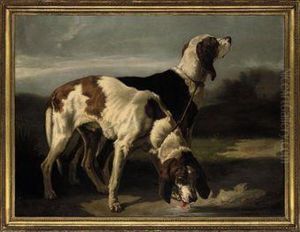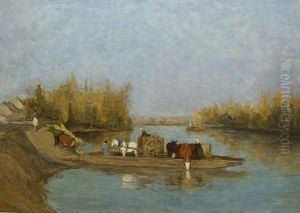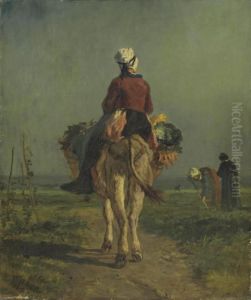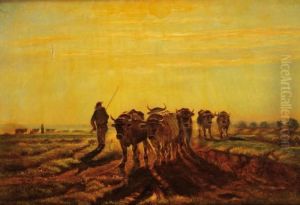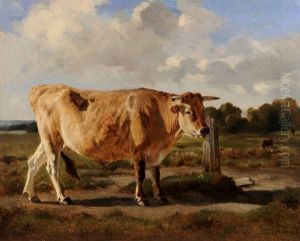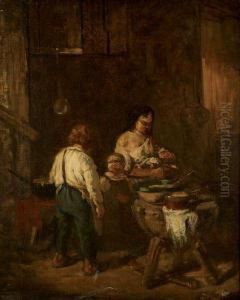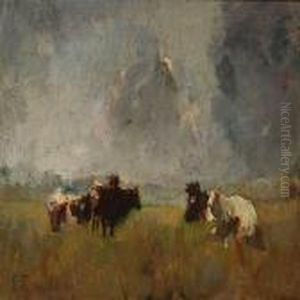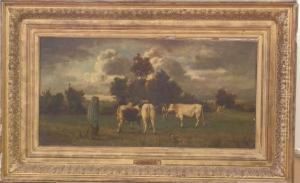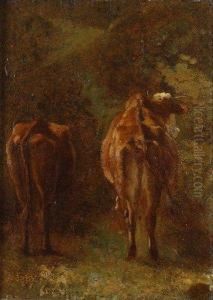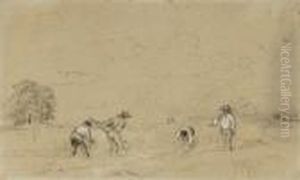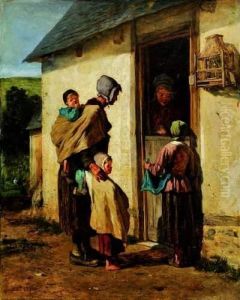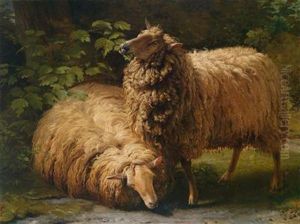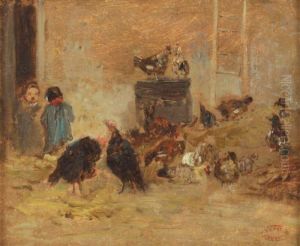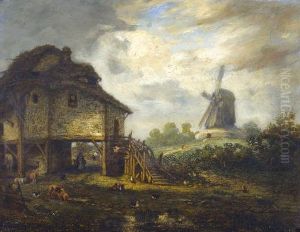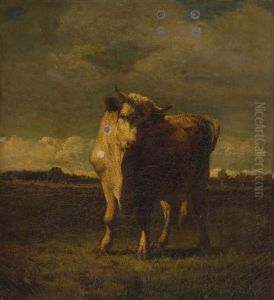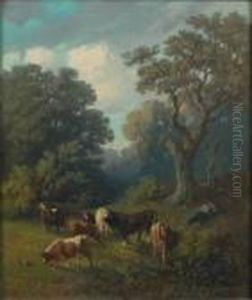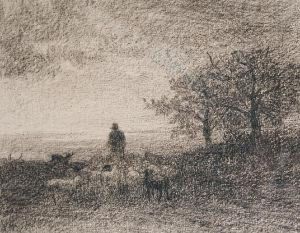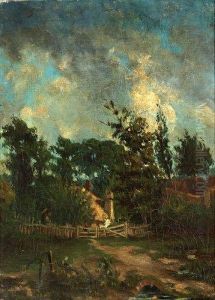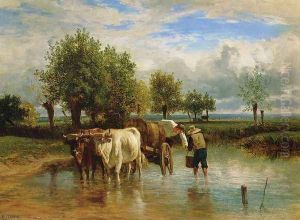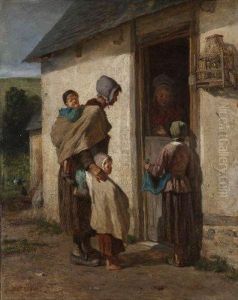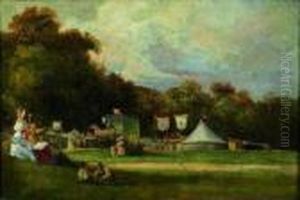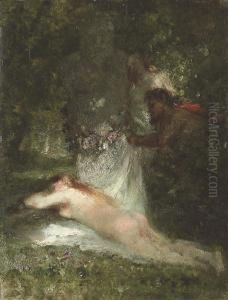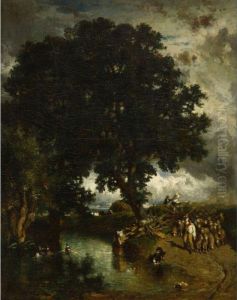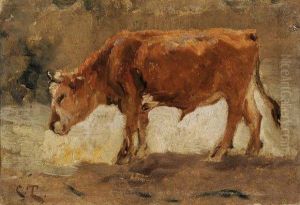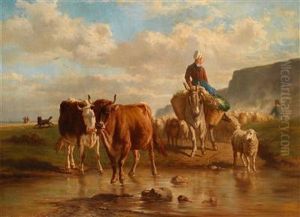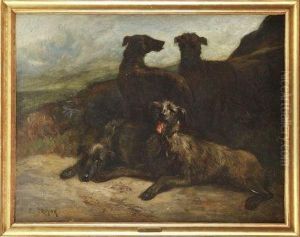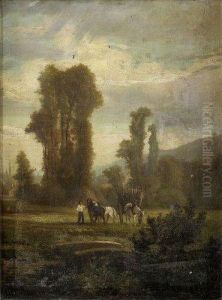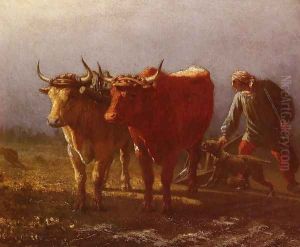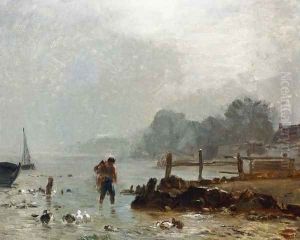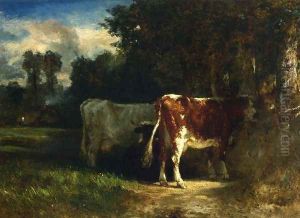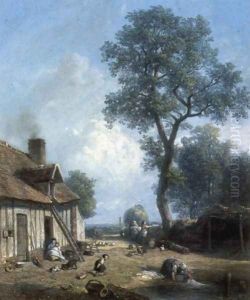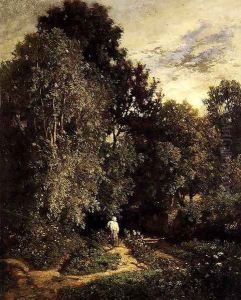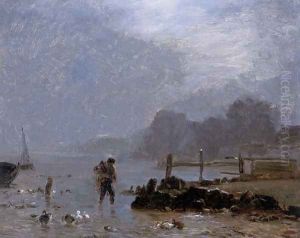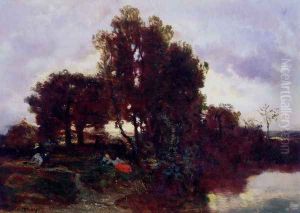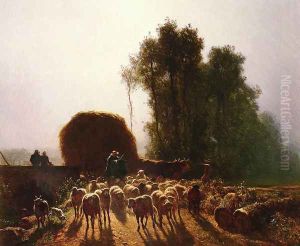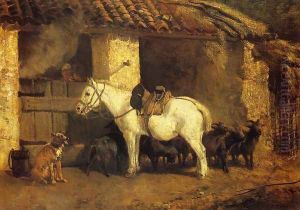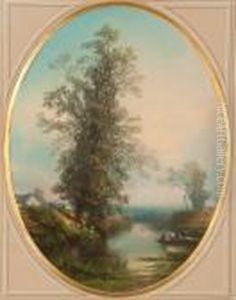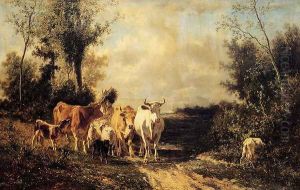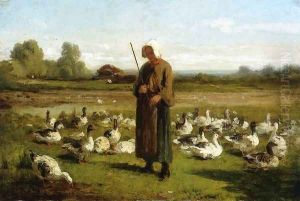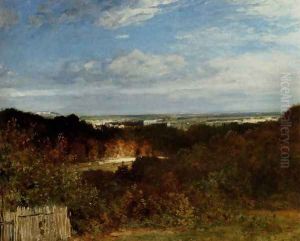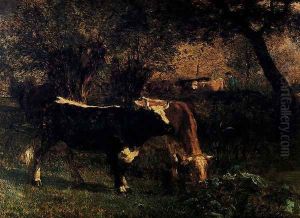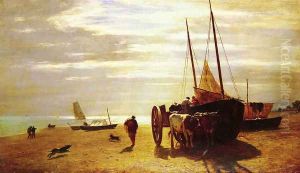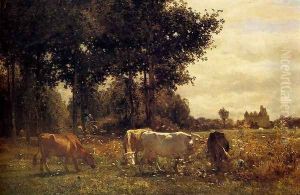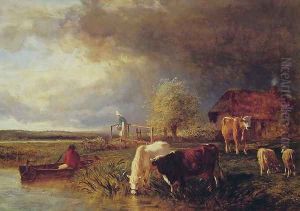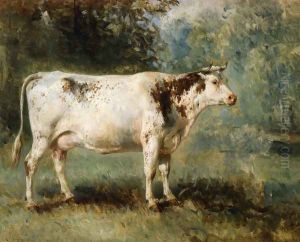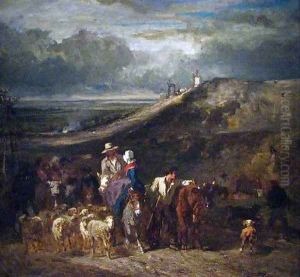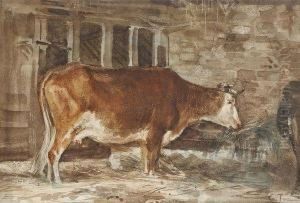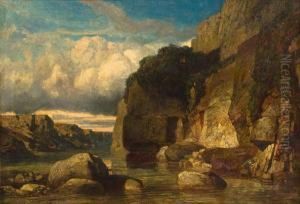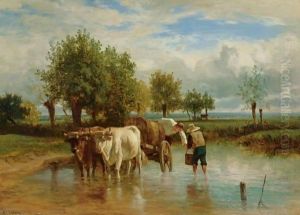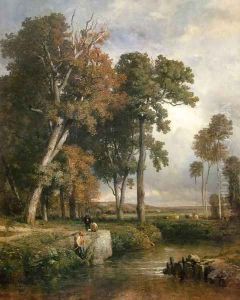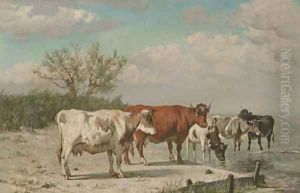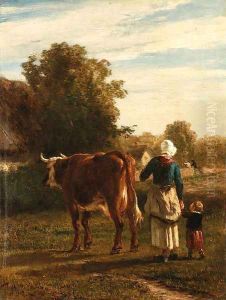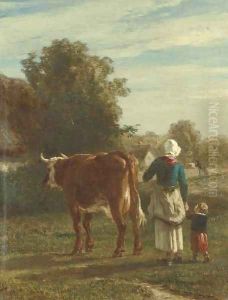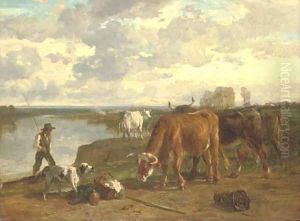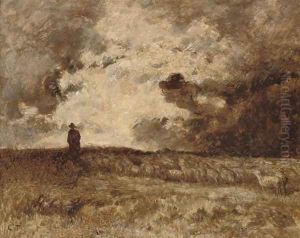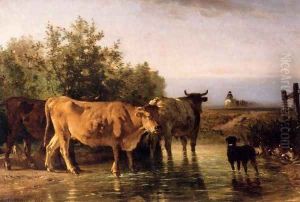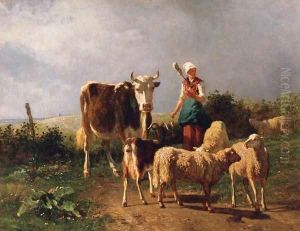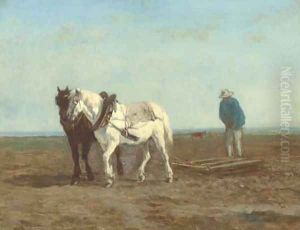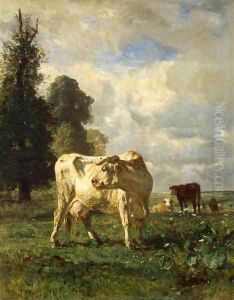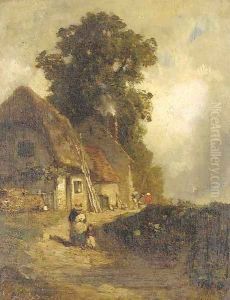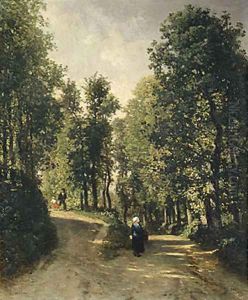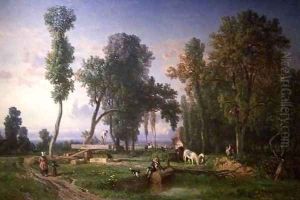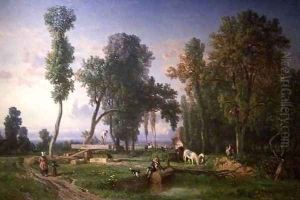Constant Troyon Paintings
Constant Troyon was a distinguished French painter of the 19th century, born on August 28, 1810, in Sèvres, a suburb of Paris, France. He is best known for his landscape and animal paintings, which reflect the realistic and sometimes romantic sensibilities of the Barbizon School, a group of artists who emphasized naturalistic and often pastoral scenes.
Troyon initially started his career with an apprenticeship at the Sèvres porcelain factory where his father worked. This early exposure to ceramics and decorative arts helped develop his keen eye for detail and color. However, his true passion lay in painting, and he soon shifted his focus to fine art. Initially, he was influenced by the 17th-century Dutch landscape and animal painters, which is evident in his early work.
Troyon's career took a significant turn after he visited the Forest of Fontainebleau, where he encountered the work of the Barbizon School painters like Théodore Rousseau and Jean-François Millet. Inspired by their treatment of light and landscape, Troyon began to incorporate these elements into his own paintings, blending naturalistic observation with a sense of lyrical romanticism.
Although he achieved moderate success with his landscapes, it was his animal paintings that garnered him significant acclaim. After another pivotal trip, this time to the Netherlands where he studied the works of Paulus Potter and Albert Cuyp, Troyon returned to France with a renewed focus on depicting animals, particularly farm animals like cattle and sheep, within their natural surroundings.
His ability to capture the essence and dignity of these animals against the backdrop of lush landscapes brought him to the attention of collectors and critics alike. Troyon's work was awarded at several Salons, and he was made a Chevalier of the Legion of Honor in 1849, which was a significant recognition of his talent and contribution to French art.
Sadly, Constant Troyon's life was cut short when he died on March 21, 1865, in Paris. Despite his relatively brief career, Troyon left an enduring legacy in the world of art, influencing future generations of animalier and landscape painters. His works remain highly regarded and can be found in many major museums around the world, including the Louvre in Paris and the Metropolitan Museum of Art in New York.
